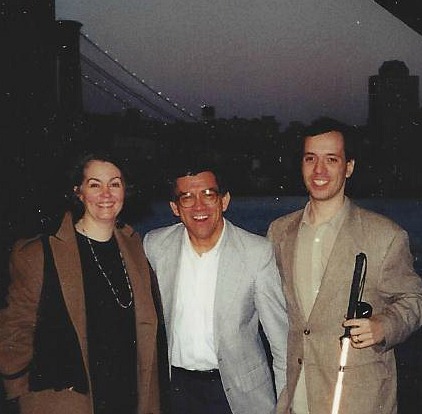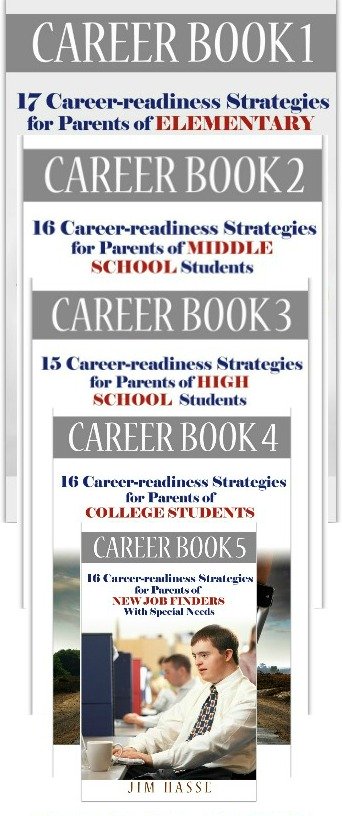Telecommuting:
Cerebral Palsy
Career Builder for Middle School
By Jim Hasse, ABC, GCDF, Disability Employment Expert
_________________________________________________________
Telecommuting, work-at-home options, evening and weekend work and a combination of work and personal time are not isolated work patterns. Instead, these developments are part of a sweeping transformation of how we work in the 21st Century.
New communication tools, such as "telepresence" robots, iPhones, iPads, cloud computing, and Skype, are creating an anywhere/anytime workplace.
That long-term trend has major implications for your middle school student who happens to have cerebral palsy (CP). It means he or she will enter a job market 10 years from now that will have probably gone through transformations which make the term, “telecommuting,” seem at least quaint and somewhat meaningless.
This is the major shift we’re experiencing right now: Work is being taken to the worker instead of the worker being taken to the work. Increasingly, work can be performed in a formal office, at home, in a car, or on the bus. The meaning in the term “telecommute” we had at the beginning of this century is evaporating.
“Telecommuting” was created in the either/or dichotomy of the 20th century when we still had strict distinctions between commuters and telecommuters, home and factory, family and community, and the personal and the professional.
It originally meant working at home by the use of an electronic linkup with a central office.
But, now we have not simply transferred what we did at our desk in the main office to our home. Instead, we’ve created businesses without boundaries that are highly focused on the individual performance of employees who are working everywhere all the time. Time away from work is now unusual.
 21st Century advantage for those with disabilities: Work is no longer bound by space or time.
21st Century advantage for those with disabilities: Work is no longer bound by space or time.Telecommuting issues
This new “post-telecommuting” work environment raises some key issues which may or may not settled by the time your youngster is ready to enter the job market. Here are a few he or she may face:
- Balance. How do you balance work and family life when your employer can call or e-mail you anytime and you are expected to answer in pronto fashion even though you may be having dinner with your family?
- Accommodations. Who pays for the accommodations you may need to do the work because you have CP? Are you expected to provide your own accommodations just because you are working outside a company office or workspace?
- Control. Will your boss feel like he or she is losing flexibility for making changes in direction on a project? How will he know how much time you are spending on different tasks? How will she be able to have access to you and the documents you have? How will confidentiality be handled? How will drug testing be administered?
- Insurance. Who is liable when someone working at home is injured?
- Evaluation. How can work performance be fairly evaluated under work settings that are not standardized and, instead, are as varied as the personal lifestyle of each member of the work team?
In fact, that is what employers are most worried about: how to effectively manage a “virtual” workforce. It all boils down to trust -- that neither the employee nor the employer will take advantage of “off-premises” work arrangements.
So, as in the last century, reliability remains a key attribute employers seek in any job candidate, regardless of whether working at a distance is involved. That will most likely be the case a decade from now when your junior high school student enters the job market.
Is your youngster showing signs of being reliable in school, social events and at home? If so, recognize those instances, specifically stating what he or she did that demonstrated reliability and personal responsibility. Follow that statement of fact with a sincere compliment about his or her positive behavior.
Due to difficulties with navigation, your youngster with CP may eventually find “working from home” quite attractive, but you may need to make him or her aware of some of the negative aspects of telecommuting. Consider these factors. Your youngster:
- May have to supply your own tools and equipment -- not to mention workspace.
- May miss out on climbing the corporate ladder by rarely or never “being at the office.”
- Will not have the discipline artificially imposed by the office.
- May start to resent your isolation. And this could lead gradually to depression.
- May find it difficult to draw a line between work and home and become a workaholic because the “office” is always there at home, even during the evening and on weekends.
- May find it inconvenient to be away from where the information, tools, supplies, postage and other work tools are stored.
My experience
with working from home
Between 2000 and 2010, I personally put telecommuting to the test, after working 28 years in a corporate office.
I felt lost at first without the structure of “going and coming back” from the office each day, but I gradually established my own routine and harnessed my personal discipline to stick with it.
Living in a small town in Wisconsin, I’d get up at 6:00 each weekday morning and be at my home office desk and on my computer by 8:00 (all dressed and groomed) and usually signed off by 5:00 with a half hour for lunch and bathroom breaks.
As a full-time employee, I was the senior content provider for eSight Careers Network, a cross-disability online community for discussing disability employment issues founded by The Associated Bind, Inc., New York City, which was located six blocks from the World Trade Center.

Nancy O'Connell, Jim Hasse, Fernando Botelho,
key eSight Careers Network developers, New York City, 1999.
I communicated with Nancy daily
through text chat and e-mail and, at various times, managed up to three
part-time freelance writers (all through e-mail and text chat).
Together, we researched, wrote, edited and published (online) more than
1,000 articles about disability-employment issues for eSight.
From
my home in Wisconsin, I worked with freelancers (all with some type of
disability) located in New Jersey, Pennsylvania, Chicago, Seattle, and
Ontario and Vancouver, Canada.
So,
old-fashioned telecommuting does work. Its 2020 version could also
offer employment possibilities for your junior high school student with
CP.
Return from Telecommuting to Career Test
Go to Cerebral Palsy Career Builders
This is Creative Commons content. You can freely and legally use, share and repurpose it for non-commercial purposes only, provided you attach this sentence and the following attribution to it (including the two links):
Originally written and illustrated by Jim Hasse, ABC, GCDF, owner of Hasse Communication Counseling, LLC, who, as a person with cerebral palsy, served for 10 years as a vice president in a Fortune 500 company during his 29-year career in corporate communication. He’s an Accredited Business Communicator, certified as a Global Career Development Facilitator and author of 14 Amazon books about disability awareness and disability employment issues.





